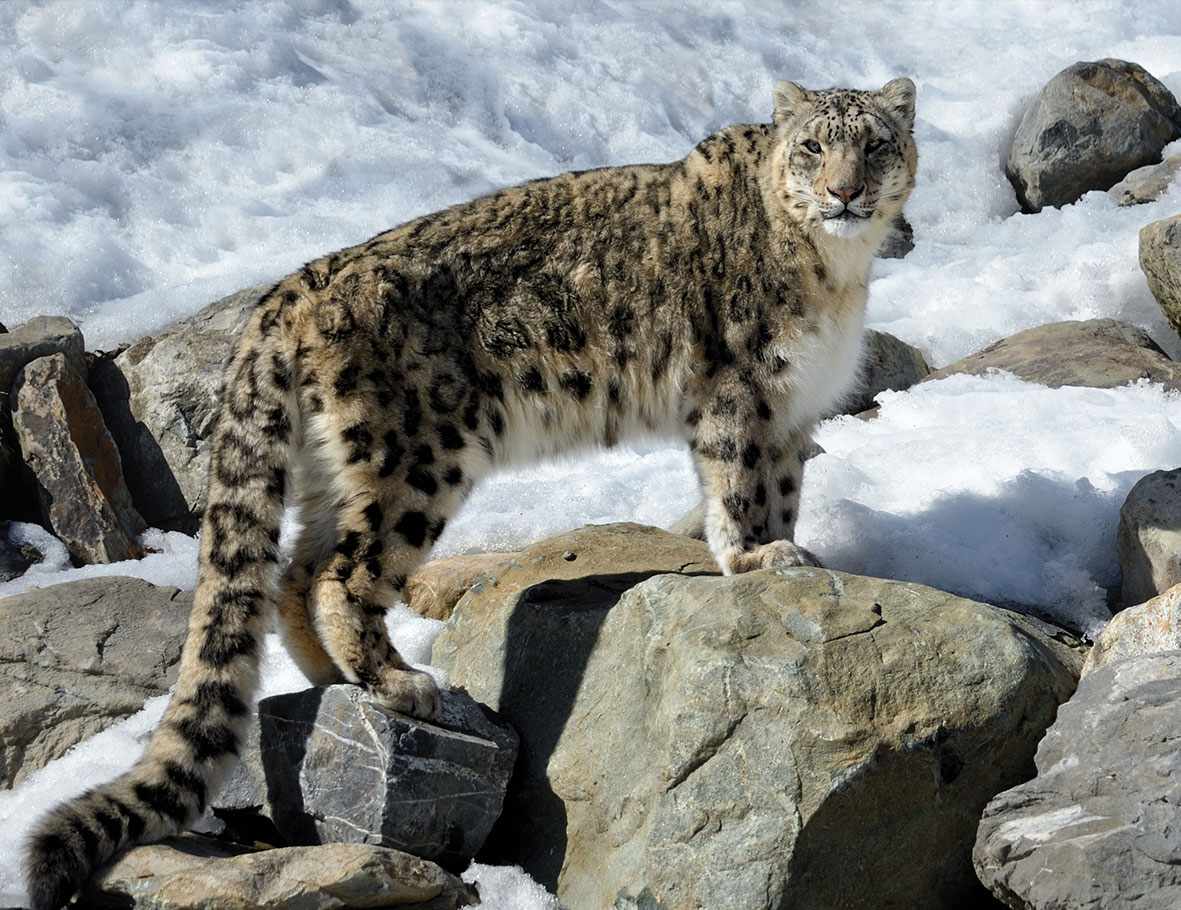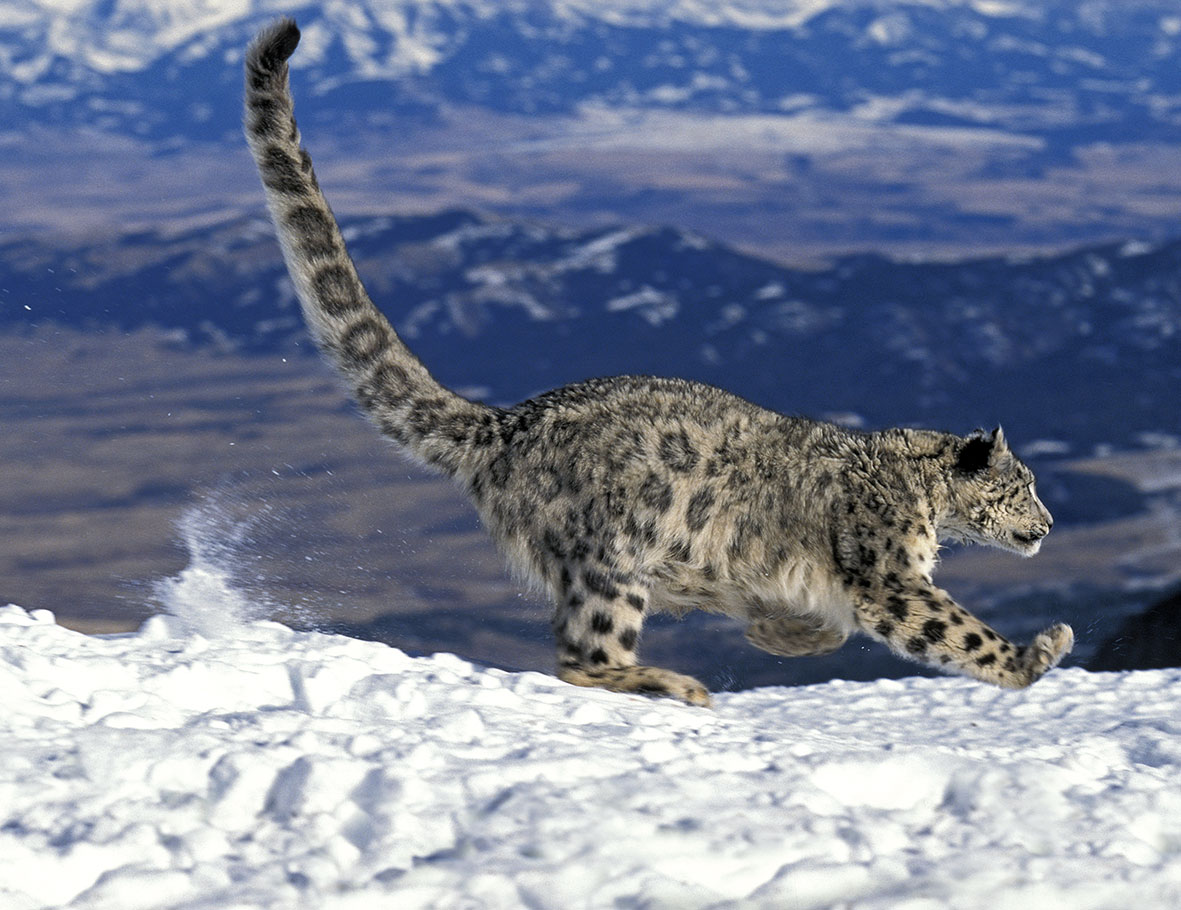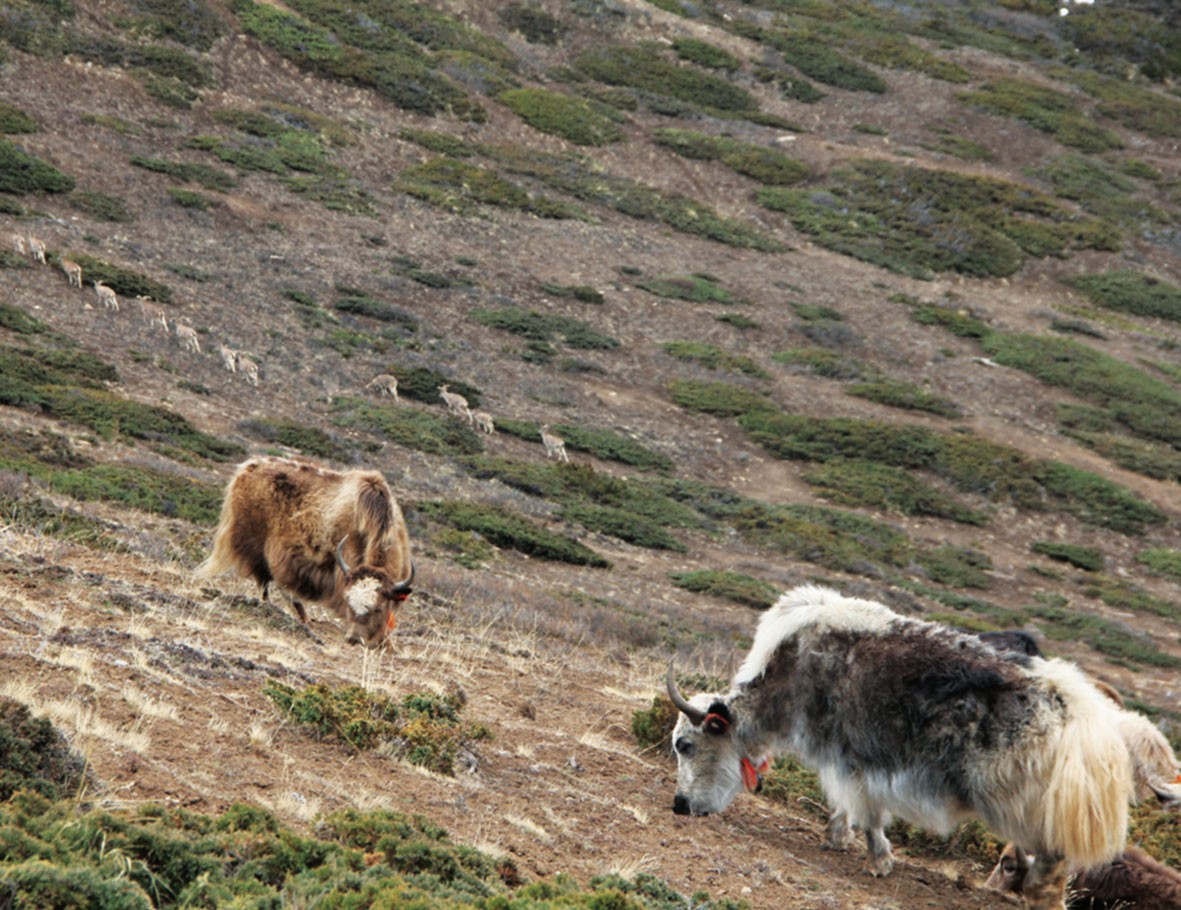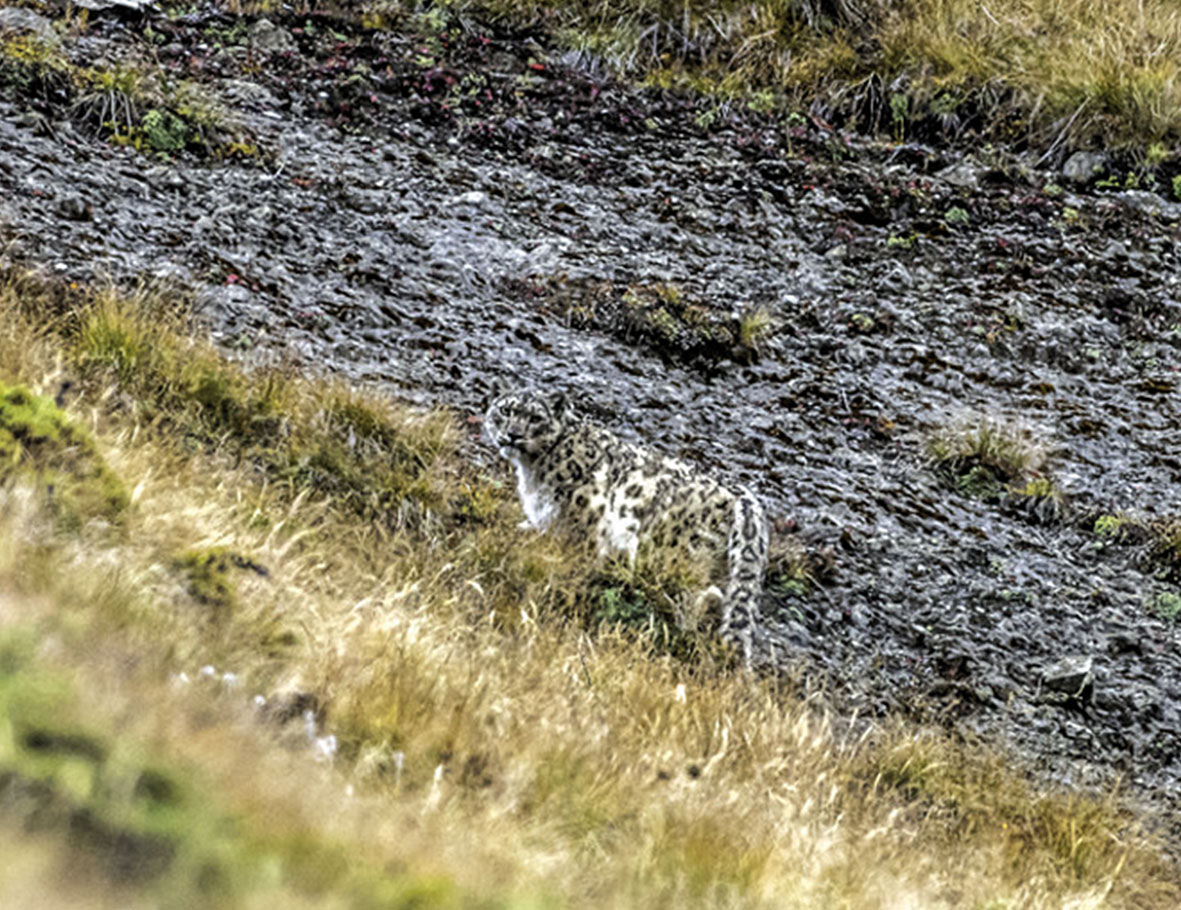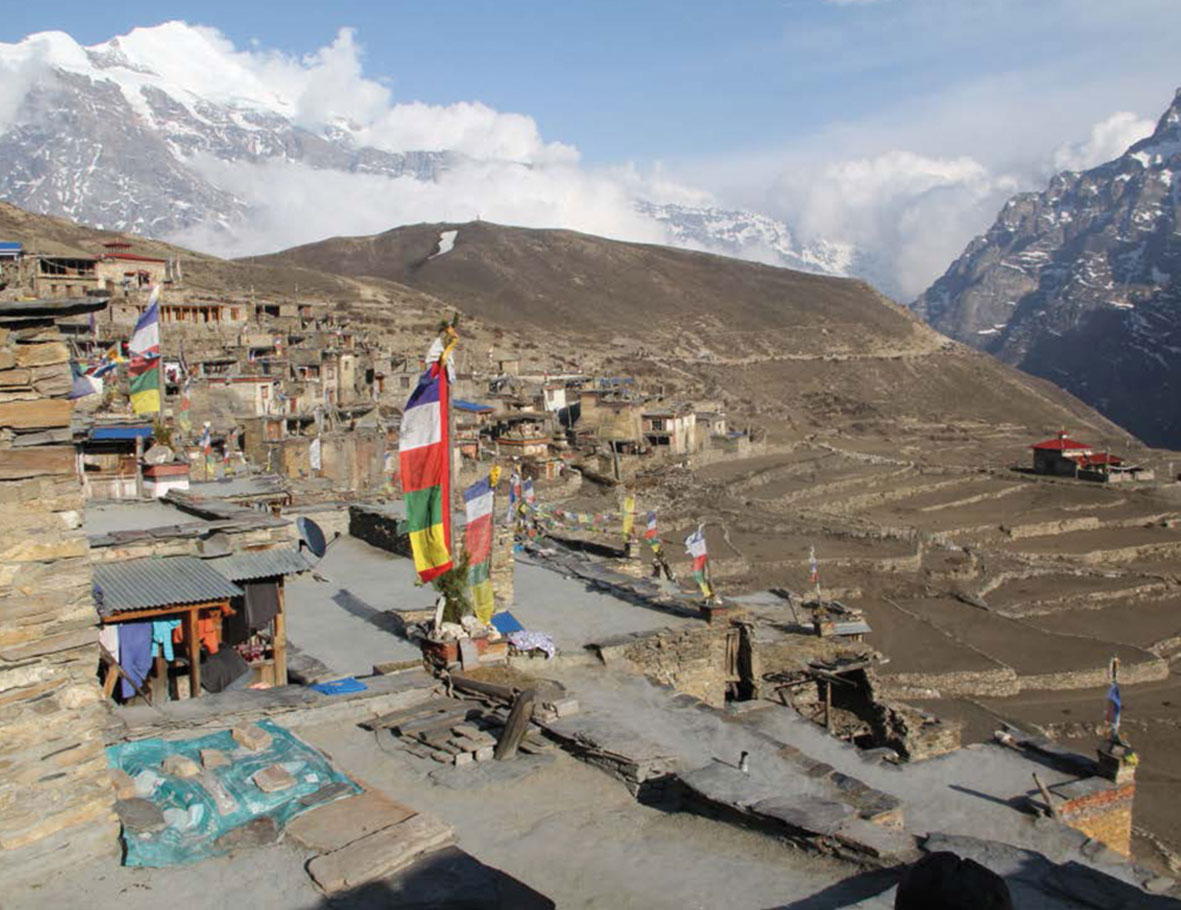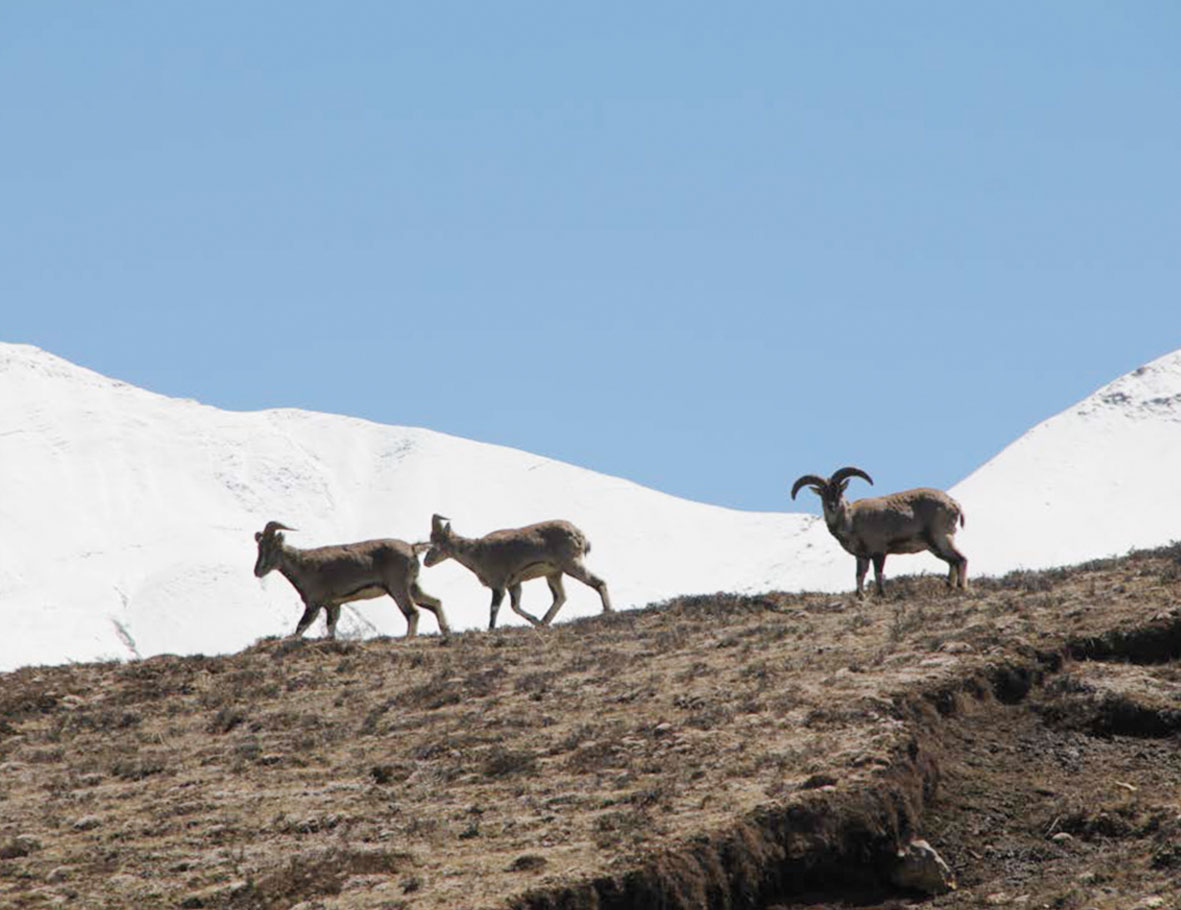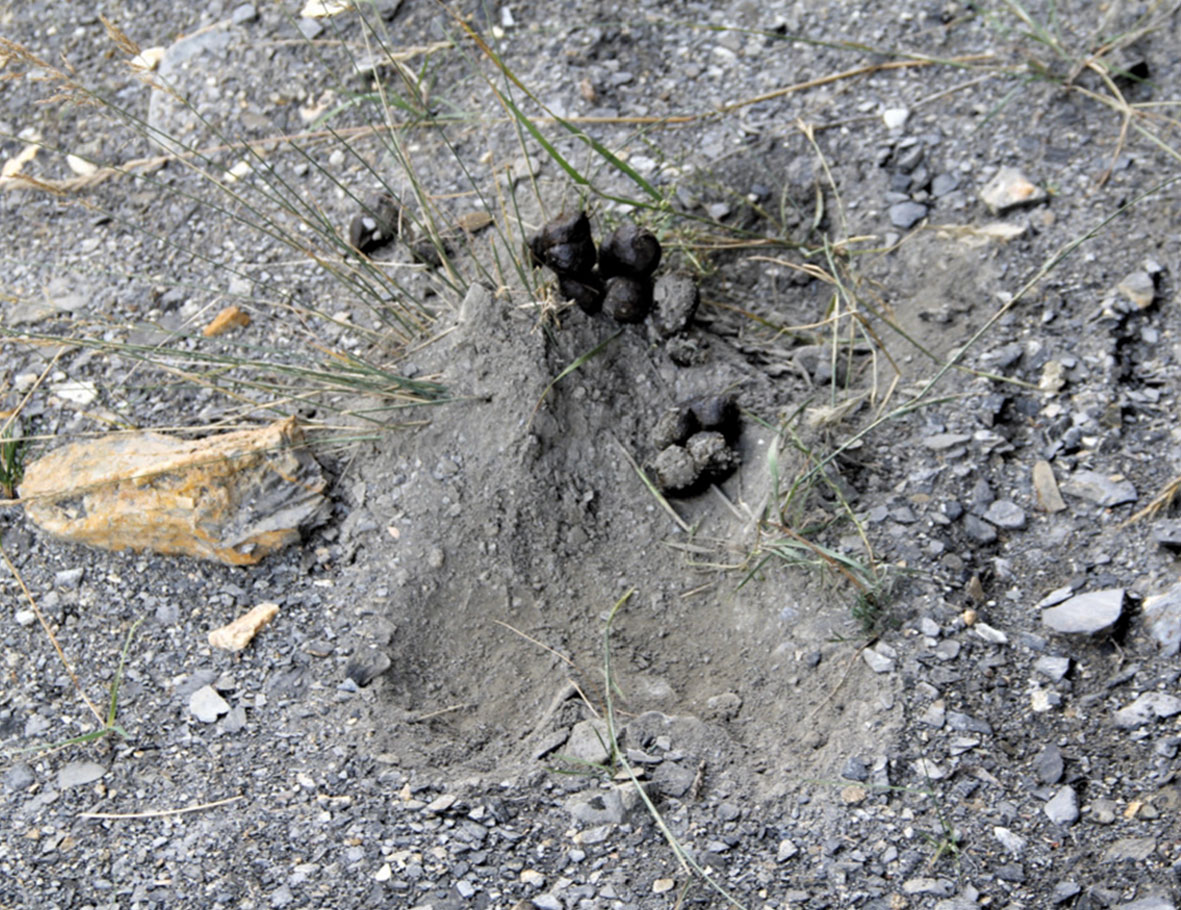Nepal
The Phantom of the Mountains: The Snow Leopard
Only a few animal species are shrouded in so many myths and legends as the shy snow leopard (Panthera uncia). The big cat from the high mountain region of central Asia is on the top of the food chain and thus plays a key ecological role. Nonetheless, the snow leopard is, like so many other animal and plant species, increasingly endangered and many populations are declining.
The International Union for Conser-vation of Nature (IUCN) estimates the global population of snow leopards at approximately 3,000 adult individuals. The dangers which confront a snow leopard include the loss of natural habitat and the resulting lack of food supply. Under this pressure, even the snow leopard turns to the easiest prey: the domestic animals of humans. Conflicts between animals and humans are thus unavoidable. The research project of the Georg August University in Göttingen, is made possible through a doctoral scholarship from the Heinrich Böll Foundation and carried out in coopera-tion with the NGO Global Primate Network Nepal. The Academy supports the dissertation of Marc Filla, in order to facilitate the protection of the snow leopard.
Filla describes the objectives of the research project:
“The goal is to determine the ecological causes of the capture of domestic animals by snow leopards and to analyze the effectiveness of various herd protection measures. This helps to identify the appropriate management measures needed to promote the sustainable co-existence of humans and snow leopards and aid in the protection of the big cats.
In order to comprehensively and scientifically substantiate the main research questions, two intensive research trips were undertaken in the Annapurna Conservation Area last year. The protect-ed area, encompassing more than 7,600 square kilometers, about triple the size of Saarland, is the largest in Nepal and is home to circa 10 percent of the snow leopard population worldwide. The focus of the studies was to determine the population of the snow leopard’s natural animals of prey and to carry out surveys among the local livestock farmers. In the course of the research at up to 5,300 meters above sea level, the researchers traveled more than 340 kilometers along the so-called transects, observed approximately 2,000 Himalayan blue sheep and noted over 600 indirect pieces of evidence of snow leopards (for example ‘scrapes’, tracks, scat). In the spring, an additional 180 interviews were conducted with local livestock farmers. Parallel to the research-oriented approach, the project supported local livestock farmers in the acquisition and the implementation of special herd protection measures. This included the purchase of 15 solar-powered “Foxlights” which were distributed to yak owners in the villages of Naar and Phu. These devices send irregular light signals at night with the goal of scaring snow leopards and other predators away from domestic livestock and in turn protecting these animals from retaliatory measures.
The research studies will be continued in 2020 and expanded to include regions adjoining the extensive project area in order to obtain further important data which contributes to the understanding
of and solution to the human-snow leopard conflicts.”


